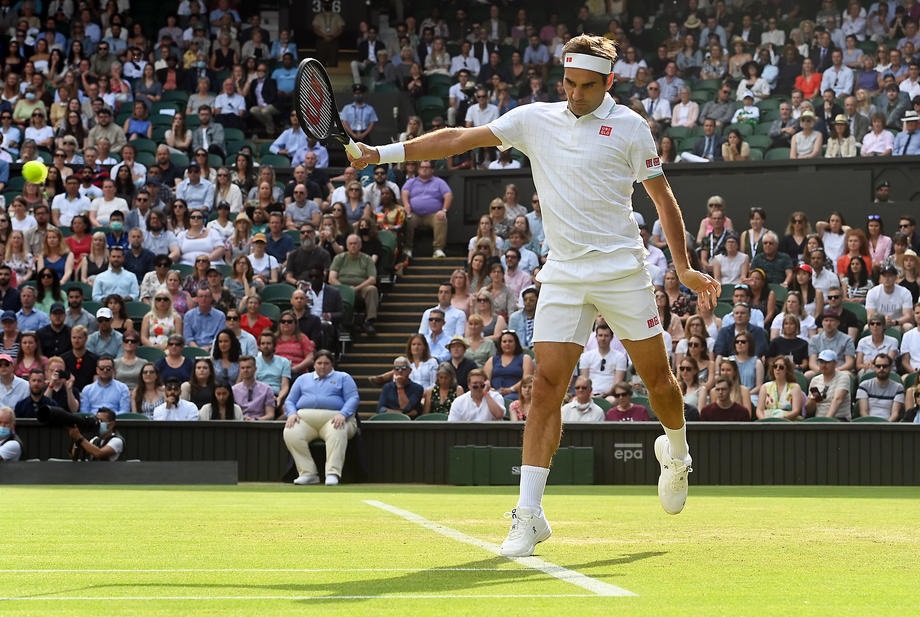- The Australian Open Has Always prided Itself As the “Happy Slam” by Alix Ramsay
- Australian Open Draws and Order Of Play for Friday, January 24, 2025
- Ricky’s pick for the Australian Open semifinal between Djokovic and Zverev
- Courageous Keys Stuns Swiatek for First Australian Open Final
- Australian Open Draws and Order Of Play for Thursday, January 23, 2025
- Ricky’s pick for the Australian Open quarterfinal between Sinner and De Minaur
- Australian Open Draws and Order Of Play for Wednesday, January 22, 2025
- Goran Ivanisevic Is No Longer Coaching Elena Rybakina
- Ricky’s pick for the Australian Open quarterfinal between Alcaraz and Djokovic
- Australian Open Draws and Order Of Play for Tuesday, January 21, 2025
- Tennis Report From Australian Open: Novak Making A Run by Alix Ramsay
- Australian Open Draws and Order Of Play for Monday, January 20, 2025
- Five-set frenzy continues in third round of Australian Open
- Australian Open Draws and Order Of Play for Sunday, January 19, 2025
- Pam Shriver’s Car Containing Grand Slam Trophies Stolen in California
Hall of Famer Dick Savitt Has Died at 95
- Updated: January 6, 2023

By Steve Flink | Friday, January 6, 2023
An extraordinary self-taught champion who competed with unbridled intensity and won two majors in 1951, including Wimbledon, a man admired by players and the public alike for his magnificent backhand and remarkable match playing acumen, Hall of Famer Dick Savitt has died at age 95.
Richard “Dick” Savitt was born March 4, 1927 in Bayonne, New Jersey and grew up in that state. He developed an imposing game from the backcourt and had impenetrable groundstrokes along with an underrated serve, stamping his authority as one of the best U.S. players of the 1950’s. His many exploits propelled Savitt into the International Tennis Hall of Fame in the Class of 1976.
Savitt’s deep intensity and adaptability as a competitor carried him to lofty heights on the premier stages of the sport. During his youth, Savitt played basketball and baseball, and was consumed by those sports until he was 13. Then tennis became a priority when he moved with his family to Texas in time for his sophomore year.
He captured the Texas State Junior Championships and became the No. 4 ranked player in the U.S. 18-and-under division. After finishing high school, he served in the U.S. Navy in 1945-46. Thereafter, he went to Cornell University starting in the autumn of 1946, graduating in 1950 after securing four Eastern Intercollegiate Championships in a row.
In 1950, Savitt moved into the U.S. top-ten at No. 6. Very imposing with his aggressive ground game, powerful serve, and fighting spirit, Savitt soared to another level of the game.
He took the 1951 Australian Championships title convincingly, claiming his maiden major with a trio of impressive triumphs down the stretch over Australian standouts John Bromwich, Frank Sedgman, and Ken McGregor. He was the first man from outside the land “Down Under” to prevail at that tournament since countrymen Don Budge was the victor in 1938. Proud of his heritage, Savitt established himself as the first Jewish player ever to collect one of the sport’s premier prizes.
Despite a quarterfinal defeat at the French Championships on the clay in Paris, he swiftly transitioned to the lawns of Wimbledon, making his debut at the All England Club and peaking propitiously on that landmark occasion. He collided with countryman Herbie Flam in the penultimate round, falling precariously behind. Flam was ahead 6-1, 5-1 before Savitt engineered a spectacular comeback to prevail in four sets.
Savitt upended McGregor in a straight sets title round meeting to celebrate his seminal moment as a tennis player at 24. Savitt said, “I was glad when it was over because two weeks is a grind. But I was thrilled to win the tournament I thought was the biggest of them all.”
Savitt was beaten in the semifinals of the U.S. Nationals that year by countryman Vic Seixas after appearing on the cover of Time Magazine, a deep honor at the time. Had he been victorious at that tournament, Savitt might have turned professional at the end of the year. But losing to Seixas cost him that chance. He later said, “Pro tennis was touring every night and not so much a tournament circuit then. It was a tough life. I can’t say I regret not doing it.”
And yet, Savitt was disappointed about not representing the U.S in the Challenge Round of Davis Cup at the end of that memorable 1951 season. He played for the American squad in earlier rounds that year, but was not chosen to compete in the Challenge Round against Australia as the U.S. was beaten 3-2.
He competed on the amateur tournament circuit regularly through the summer of 1952 and reached at least the quarterfinals in all four majors that season, but then decided to go earn a living elsewhere.
Initially he was involved in the oil business before devoting nearly the rest of his life to Wall Street work while living in New York. But Savitt stayed immersed in tennis on a part time basis. He won the U.S. Indoor Championships in 1952, 1958 and 1961.
Despite playing very few tournaments but still staying in good shape, Savitt was able to maintain his place as one of the top amateur players in the United States. He finished the 1950’s stationed among the top-six in the country for three consecutive years, achieving the No. 3 ranking in 1957 as a so-called “weekend player.” In 1961 he won singles and doubles Gold Medals at the Maccabiah Games held in Tel Aviv, Israel.
After he stopped competing, Savitt was helpful to American players of different eras including Arthur Ashe and Vitas Gerulaitis, practicing with both men in New York, regularly offering his advise. He would tell an always receptive Ashe whenever he ran into him, “Bend your knees on that low forehand volley, kid. Bend your knees.”
Meanwhile, Savitt maintained a healthy competitive diet himself. At the age of 54 in 1981, he sealed one of his most satisfying titles, winning the U.S. National Father & Son Grass Court Championships with his son Robert.
Because he played tennis so often over the years on the courts at Columbia University in New York, and frequently served as an informal advisor to their tennis teams, the University named their tennis center after him in 2002 despite the fact that he had graduated decades earlier from Cornell University. It was an honor he valued appreciably.
He also was very proud of his long association with Israel Tennis Centers which started in the 1970’s and featured 14 facilities. Savitt guided many Israeli players including top-20 ranked Amos Mansdorf. He made two visits a year to Israel for over 25 years, offering a significant amount of his time and wisdom for no financial gain.
In fact, Savitt gave substantially to tennis across his entire lifetime on a multitude of levels, achieving on a lofty scale, freely sharing his enduring passion for the game with everyone he encountered.






